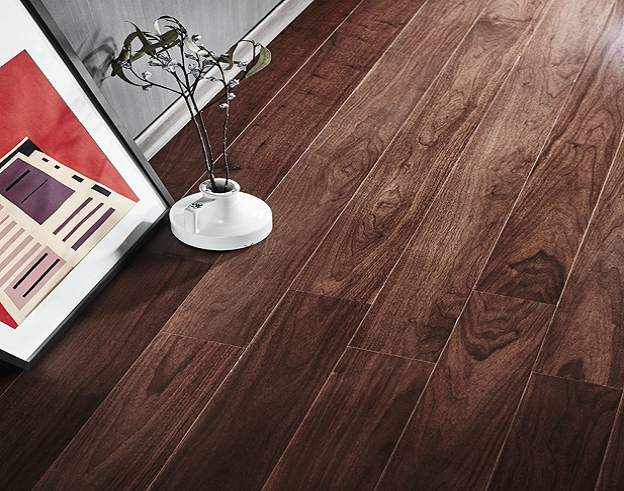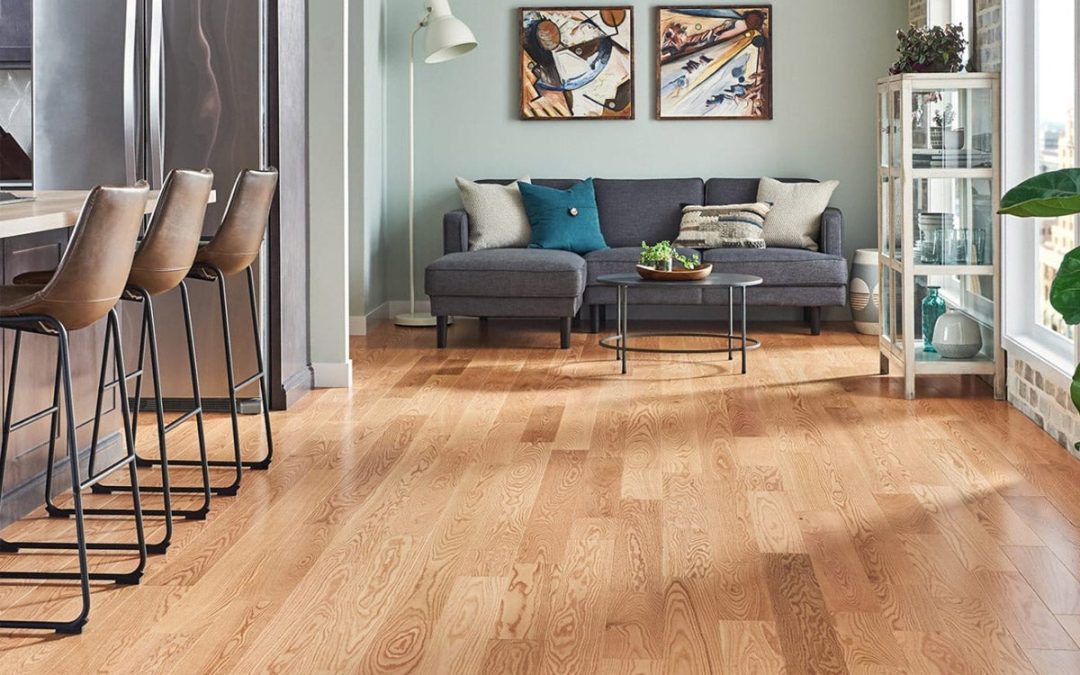With advancements in technology in recent years, engineered wood flooring is becoming a popular alternative to solid wood flooring. While engineered flooring might be the perfect choice for your new floors, it’s not for everyone. If you’re considering installing engineered wood flooring, it’s important to know some of the basics as well as how it compares to traditional hardwood flooring. Below we will go over some key differences along with the pros and cons.
Engineered Wood Flooring in Manhattan | Engineered & Solid Wood Flooring Comparison
Engineered Wood Flooring and Solid Wood Flooring Attributes:
Engineered wood flooring is made of a thin layer of wood called a veneer, under the layer of veneer there is strengthened composite plywood. In some cases, the plywood is replaced by oriented strand board (OSB) which is then compressed and glued together. Engineered wood flooring gives the aesthetic of solid wood flooring without the price point and is an easier installation. Solid wood flooring is just that, solid wood without the added layers. Although solid wood flooring is more expensive, the flooring lasts longer and can be refinished for a long period of time.
 Engineered Wood Flooring and Solid Wood Flooring Cost:
Engineered Wood Flooring and Solid Wood Flooring Cost:
Engineered wood flooring and solid wood flooring are different when it comes to the cost of installation, labor and tools. The price varies on the type of wood you use, for example an oak engineered wood flooring would cost less than solid oak wood flooring. The price of Manhattan engineered wood flooring will ultimately depend on again, the type of wood you use, the number of core layers, the thickness of veneer and how much flooring you need. Bottom line is that if a homeowner wanted a cheaper alternative to solid wood flooring, engineered wood flooring would be the cheaper alternative. The price points vary with engineered flooring, depending on how many core layers and the hardwood thickness a homeowner desires, will ultimately be the deciding factor in cost.
Engineered Wood Flooring and Solid Wood Flooring Maintenance:
Engineered wood flooring is affected very little by temperature change or moisture, compared to solid wood flooring. Engineered wood flooring can still warp if moisture issues are not taken care of, however swelling and shrinking is far less than solid wood flooring. Engineered wood flooring must be treated like solid wood flooring since the top layer is hardwood. Homeowners must actively take care of their flooring whether it be solid wood flooring or engineered flooring, so there will be less fading, scratches and dents in the wood. There is a certain amount of care needed to take care of wood floors, avoid using harsh chemicals and excess water; The floorings finish will come off and expose other core layers of your engineered flooring if not taken care of.
Engineered Wood Flooring Environmentally Friendly:
Homeowners concerned with the environment may choose engineered wood flooring over solid wood flooring. Engineered wood flooring only has a thin layer of hardwood, meaning less hardwood per plank. Also, engineered flooring uses less toxic glue and little to none saw dust. Homeowners must make sure that the company they choose to do business with has environmental certifications.
Engineered Wood Flooring and Solid Wood Flooring Design:
Engineered wood flooring in Manhattan can still have the same look and feel when it comes to comparing it with solid wood flooring. For the veneer or top layer there are many choices of wood a homeowner can choose from. Hardwood species like oak, maple, and hickory. Moreover, the rarer species of wood that can be imported will cost more. Engineered wood flooring can still have the same classic styles as well, including horizontal stripes and herringbone.
Engineered Wood Flooring Installation:
Engineered wood flooring is DIY and easy to install, most engineered floors can be installed as “floating floors”. Each piece of the floor can be fitted like a puzzle so there is no need for glue or nails to secure the floor. Installation of the floor can be done in a day depending on if you buy pre-finished planks and if you prepared your subfloor prior to installation. However, engineered wood flooring would be a more challenging install if you have a big room and having to finish the room alone. It is always advised to speak to a professional before starting on a project like this.
Engineered Wood Flooring and Solid Wood Flooring Bottom Line:
Engineered flooring and Solid wood flooring both require the same amount of upkeep for a longer lifespan. Engineered wood flooring in Manhattan can last up to fifty years if it is high quality, durable floors. In terms of temperature and moisture, solid wood flooring will last longer than engineered flooring. In the end, engineered wood flooring is suitable if you are on a budget and want to be more environmentally friendly.
Looking for a Qualified Flooring Company for Installing Engineered Wood Flooring in the Manhattan, NYC Area?
Are you looking for quality Manhattan hardwood flooring installation services? With extensive experience in hardwood floor installation, sanding, refinishing, and repairs, the team at Hudson Floors can help you find the right solution for your home. Contact us today to learn more about our services, and to schedule your complimentary in-home consultation! You can call us at 973.435.4445 or check out our website!
Manhattan Hardwood Floors Home
Other Posts:

